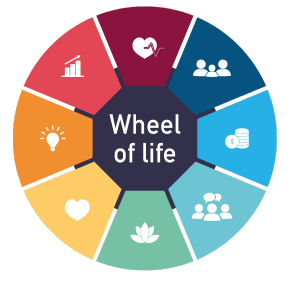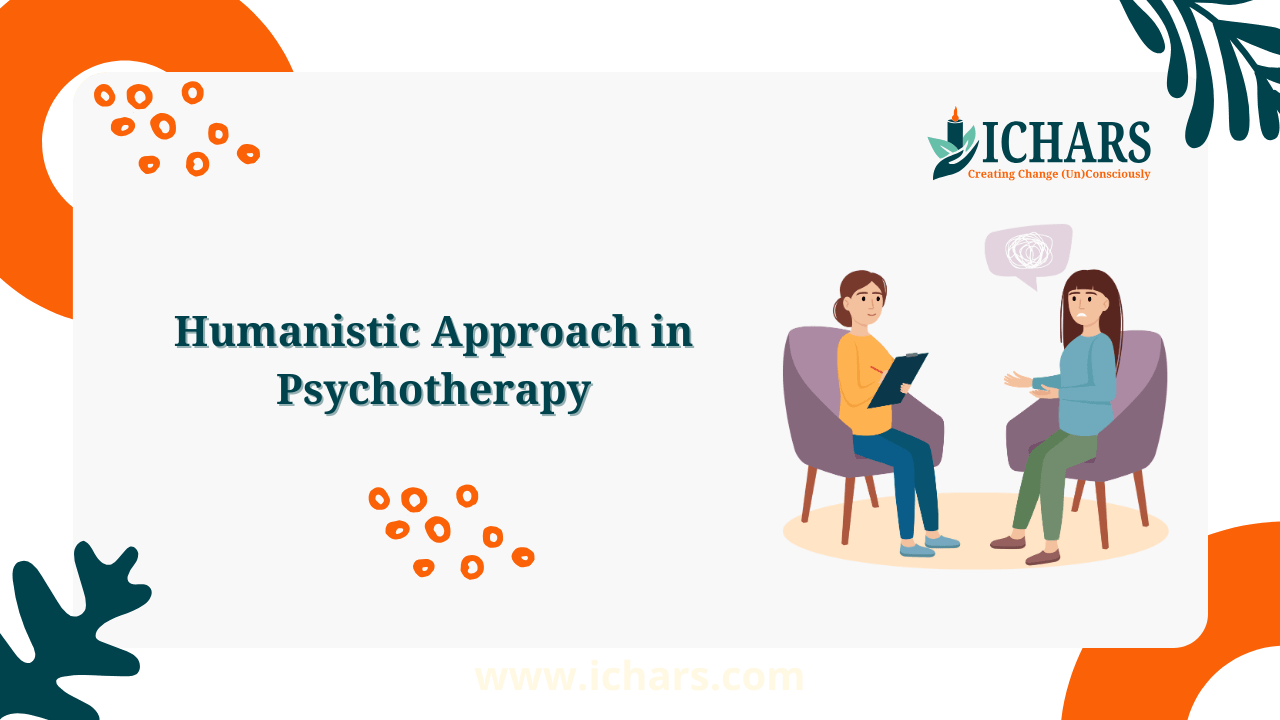Are you a practicing psychologist frustrated by your clients’ inability to adapt and thrive in therapy? Do you find yourself struggling to make meaningful connections and facilitate genuine growth in your clients?
You are not alone. Many therapists face challenges in creating effective therapeutic relationships that foster personal growth and healing.
Fortunately, there is a solution. The Humanistic Approach in psychology, a powerful framework for enhancing therapeutic effectiveness.
What is Humanistic Approach in Psychology?
The humanistic approach to psychology is a distinctive perspective that emphasizes the inherent goodness and potential for personal growth in every individual. Developed in the mid-20th century as a response to the deterministic views of psychoanalysis and behaviorism, humanistic psychology offers a more holistic understanding of human experience.
Core Principles of the Humanistic Approach in Psychology

- Holistic View of Human Nature
Humanistic psychology views individuals as whole beings, rather than the sum of their parts. This perspective considers physical, emotional, social, and spiritual aspects as interconnected and integral to understanding human behavior. - Inherent Goodness and Potential for Growth
Unlike psychoanalytic theories that emphasize unconscious conflicts or behaviorist views focusing on external stimuli, humanistic psychology believes in the inherent goodness of people and their potential for self-actualization. - Emphasis on Personal Experience
Humanistic psychologists prioritize individual experiences and subjective reality. This approach respects personal perceptions and feelings as vital components of understanding behavior. - Focus on the Present Moment
The Humanistic Approach encourages living in the “here and now.” It emphasizes current experiences and feelings over past events or future anxieties. - Free Will and Personal Responsibility
Humanistic psychology stresses the importance of free will and personal responsibility. It posits that individuals have the power to make choices and shape their own destinies.
Key Figures in Humanistic Psychology
Carl Rogers
Known for developing client-centered therapy, Rogers emphasized the importance of a therapeutic environment characterized by unconditional positive regard, empathy, and congruence.
Abraham Maslow
Famous for his hierarchy of needs, Maslow’s work focused on self-actualization and the fulfillment of human potential.
Core Assumptions of the Humanistic Approach

- Human Nature is Intrinsically Good
Humanistic psychologists believe that people are naturally inclined towards growth and goodness. This contrasts with theories that view human nature as fundamentally flawed or driven by primal instincts. - People Have an Innate Drive for Self-Actualization
According to humanistic theory, self-actualization is the process of realizing one’s potential and becoming the best version of oneself. This is seen as a fundamental human drive. - Subjective Experience is Paramount
Personal experience and individual perception are central to understanding human behavior. Humanistic psychology values subjective reality over objective measurement. - Humans are Autonomous and Capable of Change
This approach emphasizes the capacity for personal growth and change, advocating that people are not merely products of their environment or biology.
Techniques and Applications of the Humanistic Approach in Psychology
- Client-Centered Therapy (Person-Centered Therapy)
Developed by Carl Rogers, this therapeutic approach involves creating a supportive environment where clients feel accepted and understood. Key techniques include active listening, empathy, and unconditional positive regard. - Gestalt Therapy
Founded by Fritz Perls, Gestalt therapy focuses on awareness and living in the present moment. Techniques often involve experiential exercises, such as role-playing and the “empty chair” technique, to help clients explore their feelings and experiences. - Existential Therapy
This form of therapy, influenced by existential philosophy, explores issues such as meaning, freedom, and responsibility. It helps clients confront existential concerns and find meaning in their lives. - Maslow’s Hierarchy of Needs
Maslow’s model is often used to understand motivation and development. It posits that basic physiological and safety needs must be met before individuals can pursue higher-level psychological and self-fulfillment needs.
Applying the Humanistic Approach in Modern Therapy
- Enhancing Therapeutic Relationships
Integrating humanistic principles can improve the therapist-client relationship. By fostering an environment of empathy, unconditional positive regard, and genuine concern, therapists can create a safe space for clients to explore their feelings and experiences. - Promoting Self-Exploration and Growth
Humanistic techniques encourage clients to explore their inner worlds and recognize their potential for growth. This can lead to greater self-awareness, self-acceptance, and personal development. - Addressing Existential Concerns
Many clients struggle with issues of meaning, purpose, and existential anxiety. Humanistic approaches can help individuals confront and make sense of these concerns, leading to more fulfilling lives. - Supporting Autonomy and Empowerment
By emphasizing free will and personal responsibility, humanistic psychology empowers clients to take control of their lives and make meaningful choices.
Limitations of the Humanistic Approach
The Humanistic Approach in psychology, renowned for its emphasis on personal growth, self-actualization, and the inherent goodness of individuals, offers a compassionate and client-centered framework. However, it does have several notable limitations:
- Lack of Structure
Humanistic therapy is often criticized for its unstructured and non-directive nature. This lack of structure can make it challenging to measure progress and outcomes effectively. Without clear goals and defined pathways, both therapists and clients might struggle to navigate the therapeutic process efficiently. - Neglect of the Unconscious Mind
While the Humanistic Approach focuses heavily on conscious experiences, it may overlook the significant influence of the unconscious mind on behavior and emotions. This can result in an incomplete understanding of the client’s issues, as unconscious factors play a crucial role in psychological well-being. - Limited Applicability to Severe Disorders
Humanistic therapy is sometimes viewed as less effective for severe psychological disorders, where more intensive and directive approaches might be necessary. Conditions such as severe depression, anxiety disorders, or personality disorders may require therapeutic interventions beyond the scope of traditional humanistic methods. - Time-Intensive
The Humanistic Approach can be time-consuming, often requiring extended periods to achieve noticeable results. This prolonged timeline may not be feasible for all clients, particularly those seeking quicker solutions to pressing issues.
Cognitive Hypnotic Psychotherapy® (CHP): Embodying and Extending the Humanistic Approach
CHP offer structured, client-centered, and eclectic methodologies that enhance the principles of the Humanistic Approach. These frameworks integrate cognitive, behavioral, psychodynamic, and humanistic techniques to provide comprehensive therapeutic models.
Implementing Humanistic Principles with CHP
Client-Centered
CHP creates a supportive, non-judgmental environment, allowing clients to explore their thoughts and feelings freely. Techniques like the SOFT SEA framework, Milton Model, Solution-Focused Questions, and Parts Therapy enhance empathy and understanding.
- SOFT SEA Framework: Ensures therapy sessions have a natural flow and that clients can set and achieve specific goals.
- Milton Model: Uses indirect language patterns and metaphors to bypass the conscious mind and communicate directly with the unconscious.
- Solution-Focused Questions: A powerful questioning framework that helps clients identify and build on their strengths and resources.
- Parts Therapy: Explores different aspects or “parts” of the client’s personality that may be in conflict.
Example: A client struggling with procrastination might be guided to explore their goals and break tasks into manageable steps, enhancing their sense of control and motivation.
Self-Actualization and Exploration of Meaning in Life
CHP techniques help clients understand their deeper values and aspirations, facilitating self-actualization and meaning in life.
- Revelation Metaphor: Uses metaphors to help clients gain new insights and understand their experiences in a deeper, more meaningful way.
- Hypnotic Maslow’s Hierarchy of Needs: Helps clients explore and fulfill various levels of needs, from basic physiological needs to self-actualization, in a deeply relaxed state.

Additional Techniques:
- Inner Advisor: Helps clients connect with an inner guide or resource that can provide wisdom and direction.
- Wheel of Life: A visual tool that helps clients assess different areas of their lives, identifying imbalances and setting goals.
- Levels of Transformation: Facilitates deep, transformative changes by helping clients understand and integrate different levels of their experiences and identity.
Example: Using the Wheel of Life, a therapist can help a client explore and find purpose in different life areas, fostering holistic growth and self-actualization.
Unconditional Positive Regard
Creating a non-judgmental, accepting environment is crucial in humanistic therapy. CHP techniques like Rapport Building, Hypnotic Hypno-drama, Anchoring, and Resource Therapy help create this environment.
- Rapport Building: Techniques like Matching & Mirroring and Pacing & Leading are used to build a strong, trusting relationship.
- Hypnodrama: Re-enacting scenarios to help clients process and resolve trauma.
- Anchoring: Establishes positive emotional triggers that clients can use to access feelings of calm, confidence, or other desired states.
- Resource Therapy: Helps clients access and utilize their internal resources for empowerment and problem-solving.
Example: A client dealing with trauma might use Hypnotic Hypno-drama to re-enact and process the event in a safe, controlled way, enhancing their sense of safety and healing.
Present-Focused
The Humanistic Approach emphasizes addressing the present moment. CHP focuses on present issues and uses techniques like Grounding Techniques, Present State Mapping, and Future Pace.
- Grounding Techniques: Help clients stay connected to the present moment.
- Present State Mapping: Helps clients understand their current experiences and emotions.
- Future Pace: Guides clients to visualize and plan for desired outcomes.
Example: A client experiencing anxiety might use grounding techniques to stay connected to the present moment, reducing their symptoms and increasing their ability to cope.
Creating New Techniques with CHP
CHP helps psychologists learn to create new techniques by converting key theoretical frameworks from the Humanistic Approach into hypnotic experiential processes tailored to clients’ needs.
An example of this is the Hypnotic Hierarchy of Needs:
- Based on Maslow’s theory, this technique involves guiding clients through different levels of their needs in a hypnotic state. It helps them visualize and work on fulfilling these needs from basic physiological requirements to higher self-actualization goals. This process can be customized to address the unique requirements and goals of each client, making therapy more effective and personalized.
How CHP Address Limitations of Humanistic Approach
CHP offer a comprehensive and versatile framework that addresses the limitations of the Humanistic Approach, enhancing its effectiveness and applicability.
- Structured Framework
CHP employs the SOFT SEA framework (Solution-Oriented Framework for Therapy and Self-Exploration), ensuring a clear flow and defined goals throughout the therapeutic process. This structured approach helps in systematically addressing client issues while maintaining the flexibility to adapt to individual needs. It balances the need for direction with the client-centered ethos of humanistic therapy. - Exploration of the Unconscious Mind
CHP incorporates techniques that delve into the unconscious mind, addressing the gap left by traditional humanistic therapy. Techniques such as:- N-Step Reframing
- Inner Child Work
- Regression Therapy
- Parts Therapy
- Dream Analysis
- Symbolic Imagery
- Applicability to Severe Disorders
The integration of cognitive, behavioral, psychodynamic, and hypnotic techniques within CHP makes it highly versatile and effective for a broad spectrum of psychological issues, including severe disorders. This eclectic approach allows for more intensive interventions when necessary, offering tools to address complex conditions such as phobias, psychosomatic problems, and compulsions. - Efficiency and Effectiveness
CHP’s result-oriented methodology typically involves 8 ± 2 sessions, allowing clients to experience significant progress by the 3rd or 4th session. This efficiency enhances client compliance and reduces attrition rates. The structured yet flexible approach ensures that therapy is both effective and time-efficient, meeting the needs of clients seeking quicker solutions.
Conclusion
The Humanistic Approach in psychology, with its focus on empathy, personal growth, and self-actualization, has revolutionized therapeutic practices. Cognitive Hypnotic Psychotherapy® embody and extend these principles, offering structured, client-centered, and eclectic methodologies.
By integrating these advanced therapeutic techniques, psychologists can create more meaningful, effective, and empowering therapeutic relationships, ultimately leading to greater self-awareness, self-acceptance, and fulfillment for their clients.
Exploring the Cognitive Hypnotic Psychotherapy® Diploma can enrich your practice with structured, effective, and holistic methods, transforming both your clients’ lives and your professional development. Embrace the Humanistic Approach in psychology and discover how CHP can help you implement these principles more effectively in your therapeutic practice.

